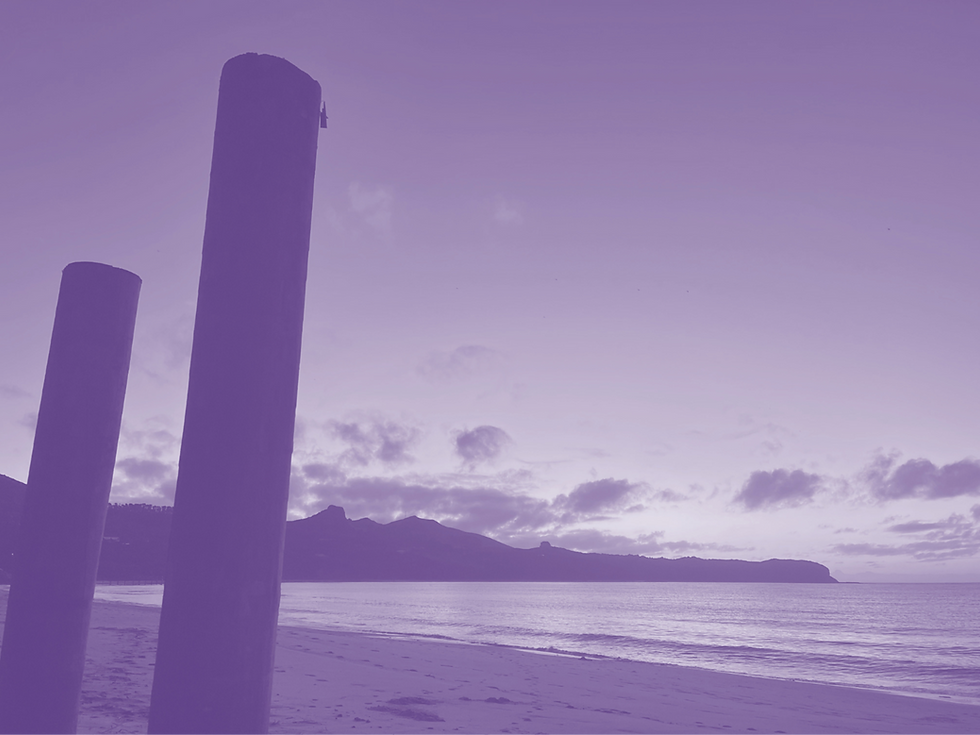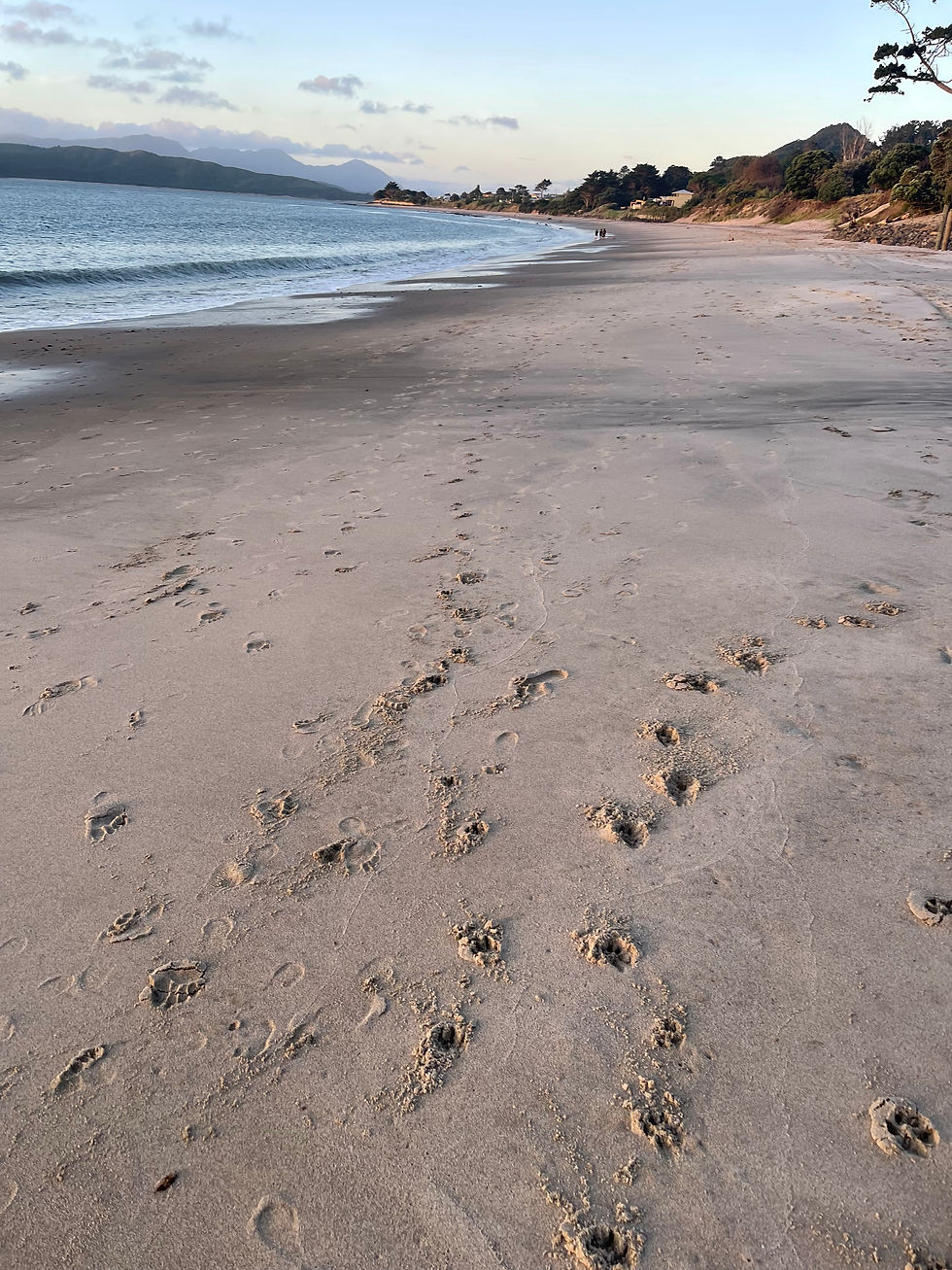We are born into the world by generations of sexual beings. From Tāne and Hineahuone through to our parents, whakapapa ties us together and provides space to see ourselves reflected in the generations before us, and generations to come. He momo tonu - true to form, we carry within us elements of our tūpuna in the fullness and diversity of their being. What is whakapapa? As Māori, whakapapa isn’t just family history. It encompasses our connections to tūpuna, whenua and whānau. Tane, one of the sons of Papatūānuku and Ranginui, is credited with creating the first human, a woman named Hineahuone. To give Hineahuone human life, he united the strands of ira atua and ira tangata and breathed life into her. Ira atua gave her a lineage from ātua and Ira tangata gave her a connection to future generations. Through Hineahuone, we inherit ira atua. Our whakapapa affirms our intrinsic value as the descendants of ātua. We also inherit ira tangata. Our whakapapa gives us significance, knowing we are special and belong unconditionally, through connections to past and future generations of our whānau. It can be hard being Māori Sometimes, racism and discrimination can make us feel like being Māori is bad. This isn't true! There is no one way of being Māori, and there are huge amounts of beauty, wisdom, joy and belonging to be found in our culture. Strengthening whakapapa Marae can be safe spaces to reconnect with whakapapa, reo and tikanga, that can help us to make meaning of who we are. They provide space where being Māori is comfortable, and our wellbeing is prioritised, but they aren't the only way to strengthen our whakapapa. Sometimes we may not be able to reconnect with our marae. Some people learn te reo Māori, connect through mahi toi, connect to te taiao or explore whānau connections. Connections to tūpuna and tūrangawaewae Connecting to our tūpuna can help validate us as descendants of people like us, who have faced similar challenges, and found ways through. We can learn from their journeys and the mātauranga or wisdom our tūpuna share with us. Learning their stories, and carrying with us the tools that we think would be helpful in our lives is a way to carry mātauranga through our whakapapa Connecting to our tūrangawaewae bring us into the spaces our ancestors used to be and can support our connection to them. These spaces can help us know that we belong, we are tangata whenua and we have a right to be ourselves in our own lands. These days many of us live in cities far away from the lands our ancestors roamed. Knowing our tūrangawaewae can connect us to the histories, lives and wairua of our tūpuna as we journey through different spaces in our lives. Dynamics of whanaungatanga Whanaungatanga are the things we do to make connections and strengthen our bonds with others in our community. Whanaungatanga gives us a safety net, help us work together, watch how people relate to others, and decide how we want to create relationships in our own lives. Validating our identities Knowing our whakapapa, our tūpuna, our tūrangawaewae and drawing on whanaungatanga can help us create our own pathways. Clearing space for us to be present and accepted within our whakapapa gives us space to be the expert in our own lives, exercise our mana, and choose what qualities and attributes can best serve us in different spaces, and into the future.
Whakapapa
Oriori were songs written for the birth of a child and sung to them as lullabies. They included descriptions of the environment at the time and place of birth. They also included the influence of atua, people who were present, and the attributes and qualities or gifts they imparted to the child to take with them. The meaning and intent behind the child’s name may also be revealed. People take oriori with them as a reminder of their uniqueness, potential, and the qualities and attributes they have inherited. Source – Munroe & Kohu Morgan (2006). Oriori A Lullaby. Go Tuatara Limited.
Oriori
Everyone is born with mana. Mana is the esteem we inherit at birth from our whakapapa to atua, tangata, and whenua. In our interactions with others, mana can be enhanced, nurtured, or strengthened. This might make us feel good. But we also need to be careful because others can strip, change, deplete, damage, or abuse our mana through their interactions with us. This might make us feel stink. It is important to notice the patterns of how we feel with different people because this can clue us into people are respecting our mana or not. Our mana can be strengthened by others who encourage us to use our voice to tell people about how we feel or give us support to realise our power to make decisions about our lives and enhance our sense of honour and authority. We can connect to our mana can through knowing who we are, where we come from, and why we are here.
Mana
Everyone is born with tapu. Tapu refers to the sacredness of our human lives, our bodies, interactions, and places. We can recognise the things that keep us safe and protected and set our boundaries as best we can. Tapu is often spoken about in relation to small elements of tikanga. For instance, it’s tapu to sit on the table because that can make us physically unwell. Our heads are tapu so it’s important to wear a helmet when are cycling in case we crash. Rahui are placed on an area when places become tapu to restrict people from accessing them, like when shellfish reserves are low and need to replenish to be available over a long term. There are some contexts where we automatically know what to do to protect ourselves. Some are more complex. Tapu can also be spoken about in relation to bigger aspects of tikanga. For instance, we might be under the protection of the atua in events like childbirth, warfare, or death. When we talk of tapu, we are talking about the spaces where we might be navigating unseen elements. Te whare tangata is tapu because it is the house of humanity, and the place where new life moves from te ao wairua into te ao mārama. As we become sexual beings we may get caught up in the joy of exploration rather than an awareness of our mana and tapu in relationships.
Tapu
Mātauranga Māori
In Ngāpuhi, people are often asked who they are through the phrase ‘ko wai koe?’ that literally translates to ‘from what waters do you descend?’ An understanding of who we are is informed by our relationships and connection to Aotearoa by the waka (canoe) our ancestors took to get here, our maunga (mountains), our moana (bodies of waters), and our ancestral and ongoing obligations in connection with iwi (tribe), hapū (sub-tribe) marae (ancestral meeting house), and tūpuna (primary ancestor). We understand the quality of our relationships with these objects, places and people through the notions of mana and tapu.
Ko wai koe?
Mātauranga Rohe
We often hear that gender and sexuality occur along a spectrum, but what does that mean? The easiest way to think of a spectrum is to think of a rainbow. We tend to think of them as separate colours so we can make sense of them, but really all of the colours blend seamlessly together. Sexuality and gender are the same. As a society, we notice the different qualities and attributes people have, but these differences aren't set in stone and can change over time or in different spaces. Gender and sexuality are also fluid, our tūpuna knew that over time we might change and grow into new ways of being and new ways of being attracted to one another. There is no right or wrong way to express your gender or sexuality. We are all unique and vibrant.
Spectrum
Tauiwi Knowledge
Mātauranga
about what it means to be you
_edited.png)

What it means to be you
Mātauranga
Mātauranga



The Top Tech Gifts
We are born into the world by generations of sexual beings. From Tāne and Hineahuone through to our parents, whakapapa ties us together and provides space to see ourselves reflected in the generations before us, and generations to come. He momo tonu - true to form, we carry within us elements of our tūpuna in the fullness and diversity of their being.
What is whakapapa?
As Māori, whakapapa isn’t just family history. It encompasses our connections to tūpuna, whenua and whānau. Tane, one of the sons of Papatūānuku and Ranginui, is credited with creating the first human, a woman named Hineahuone. To give Hineahuone human life, he united the strands of ira atua and ira tangata and breathed life into her. Ira atua gave her a lineage from ātua and Ira tangata gave her a connection to future generations.
Through Hineahuone, we inherit ira atua. Our whakapapa affirms our intrinsic value as the descendants of ātua. We also inherit ira tangata. Our whakapapa gives us significance, knowing we are special and belong unconditionally, through connections to past and future generations of our whānau.
It can be hard being Māori
Sometimes, racism and discrimination can make us feel like being Māori is bad. This isn't true! There is no one way of being Māori, and there are huge amounts of beauty, wisdom, joy and belonging to be found in our culture.
Strengthening whakapapa
Marae can be safe spaces to reconnect with whakapapa, reo and tikanga, that can help us to make meaning of who we are. They provide space where being Māori is comfortable, and our wellbeing is prioritised, but they aren't the only way to strengthen our whakapapa. Sometimes we may not be able to reconnect with our marae. Some people learn te reo Māori, connect through mahi toi, connect to te taiao or explore whānau connections.
Connections to tūpuna and tūrangawaewae
Connecting to our tūpuna can help validate us as descendants of people like us, who have faced similar challenges, and found ways through. We can learn from their journeys and the mātauranga or wisdom our tūpuna share with us. Learning their stories, and carrying with us the tools that we think would be helpful in our lives is a way to carry mātauranga through our whakapapa
Connecting to our tūrangawaewae bring us into the spaces our ancestors used to be and can support our connection to them. These spaces can help us know that we belong, we are tangata whenua and we have a right to be ourselves in our own lands. These days many of us live in cities far away from the lands our ancestors roamed. Knowing our tūrangawaewae can connect us to the histories, lives and wairua of our tūpuna as we journey through different spaces in our lives.
Dynamics of whanaungatanga
Whanaungatanga are the things we do to make connections and strengthen our bonds with others in our community. Whanaungatanga gives us a safety net, help us work together, watch how people relate to others, and decide how we want to create relationships in our own lives.
Validating our identities
Knowing our whakapapa, our tūpuna, our tūrangawaewae and drawing on whanaungatanga can help us create our own pathways. Clearing space for us to be present and accepted within our whakapapa gives us space to be the expert in our own lives, exercise our mana, and choose what qualities and attributes can best serve us in different spaces, and into the future.

Mātauranga
Takatāpui
No matter the words we use, diversity in gender and sexuality are a natural part of life. Before colonisation diversity was the norm – we can see this in whakataukī, whakairo, pūrākau and other forms of toi Māori. Ruia taitea, kia tū ko taikākā. Strip away the sapwood, the heartwood remains. Shed those outer layers and reveal your internal courage. Many of the words we had to speak to diversity in sexuality and gender changed over time, written down by missionaries and historians, but defined through their worldviews rather than ours. The notion of takatāpui first entered our reo with the story of Hinemoa, Tiki and Tūtānekai, but historians at the time chose to define this word as “close friends of the same gender”. Other rōpū used kupu like mōkai, which through similar processes now refers to the notion of slavery, servitude or pets. Today, in the South Island, we might hear “te whānau Ūenuku” to refer to our LGBTQI+ whānau. Rainbows have always been part of our world. Ki te Kotahi te kākaho, ka whati; ki te kāpuia, e kore e whati. If a reed stands alone it can be broken; if it is in a group, it cannot. When we standalone we are vulnerable, but together we are unbreakable. (Kingi Tūkāroto Matutaera Pōtatau Te Wherowhero Tāwhiao). We should derive strength from mana wāhine, mana tāne, mana takatāpui. If people try to drag you down because of your gender or sexuality, stand firm knowing you belong to a broader community who have your back. No matter the words we use, takatāpui are part of our whānau. Today, artists like essa mae ranipiri and Hōhua Ropate Kurene use pūrākau and toi to capture Indigenous experiences outside of binary gender and sexuality expectations to create space for new norms and expressions of beauty. We do not have to express our gender or sexuality any one way to be authentically Māori. Our Māoritanga lies in our whakapapa, and our gender and sexuality are unique.

Matauranga Maori
Matauranga Maori
Sexuality
Sexuality refers to our capacity to experience sexual feelings, the type of people we are attracted to, and the type of sexual activity we like to engage in. Sexual orientation, regardless of gender, refers to the type of people we are sexually attracted to. Who is it that we desire? A long time ago, society used to tell us people were either “straight” or “gay”. Today, we recognise that gender is a spectrum rather than a binary, and in the same way, sexual orientation also occurs along a spectrum. You might not be aware of different sexualities, so here is a quick information sheet to help! Keep in mind, that as with all labels, they are living categories and people often disagree on how they should be used, or who should use them. Straight or heterosexual refers to people who are sexually attracted to the “opposite” gender. For instance, women who are exclusively attracted to men, or men who are exclusively attracted to women. Queer is often used as an umbrella term to refer to people who fall outside of heterosexual attraction. A long time ago, queer was used as a slur to demean people who weren’t interested in heterosexuality. Over time, queer has been reclaimed as a way to assert belonging to a broader community. Gay generally refers to men who are attracted to men, however it can sometimes be used as an umbrella term to refer to someone’s capacity for sexual attraction to people of the same gender. Lesbian refers to women who are attracted to women, however some lesbians define this as non-men who are attracted to non-men. Bisexual people are those who are attracted to their own and another gender. Some people define this as people who are attracted to men and women, however, many bisexual people prefer to specify that their bisexuality includes nonbinary or gender nonconforming people too. Pansexual people are those who are attracted to people regardless of gender. Remember none of these categories are cut and dry, you might change over time in where you fit or feel comfortable within any of these, and that is okay! You are the expert in your own life. But what about the LGBTQI+ acronym? LGBTQI+ is an acronym that covers a broad population of people who fall outside of cisheternormativity meaning the assumption that gender = sex and that heterosexuality is the normal way to be. L = Lesbian, G = Gay, B = Bisexual, T = Trans, Q = Queer, I = Intersex, and the + recognises that there are far more identities that help make up the community. You might have also seen “2S”, this refers to Two Spirit people. This is mātauranga from the First Nations people of Turtle Island shaped by Lakota and Diné knowledges to refer to people who hold the spirit of both men and women. It is important to recognise that Two Spirit is not a label that should be claimed by people who do not whakapapa to these spaces, we have our own terms and our own rights as Indigenous people.
We often see relationships between girls and boys in our communities and on television. But we don’t see relationships between girls and girls or boys and boys as much. Did you know there are lots of different kinds of sexuality, and ways we can describe who we are attracted to? Take a journey with us to explore more about sexuality.
On this page you can explore cornerstone concepts, knowledges, practices, values and pūrākau from Te Ao Māori about sexual violence. Pūrākau like these help us to understand the dynamics of mana and tapu, and how we relate, enrich or diminish one another. Concepts from Te Ao Māori are noted in purple, concepts from specific iwi are noted in green, and social justice concepts that relate to our lives as Māori are noted in yellow.


Tōku tuakiri
Want to know more about sexuality?
_edited.png)
Tōku tuakiri
Wan to know more about sexuality?
Ruia taitea, kia tū ko taikākā
Strip away the sapwood, the heartwood remains (Elder, 2020).
Discard the expectations of others that don’t align with your values and aspirations. Know that is your right to be pono, and you were brought into the world to be loved and valued for you who are.



